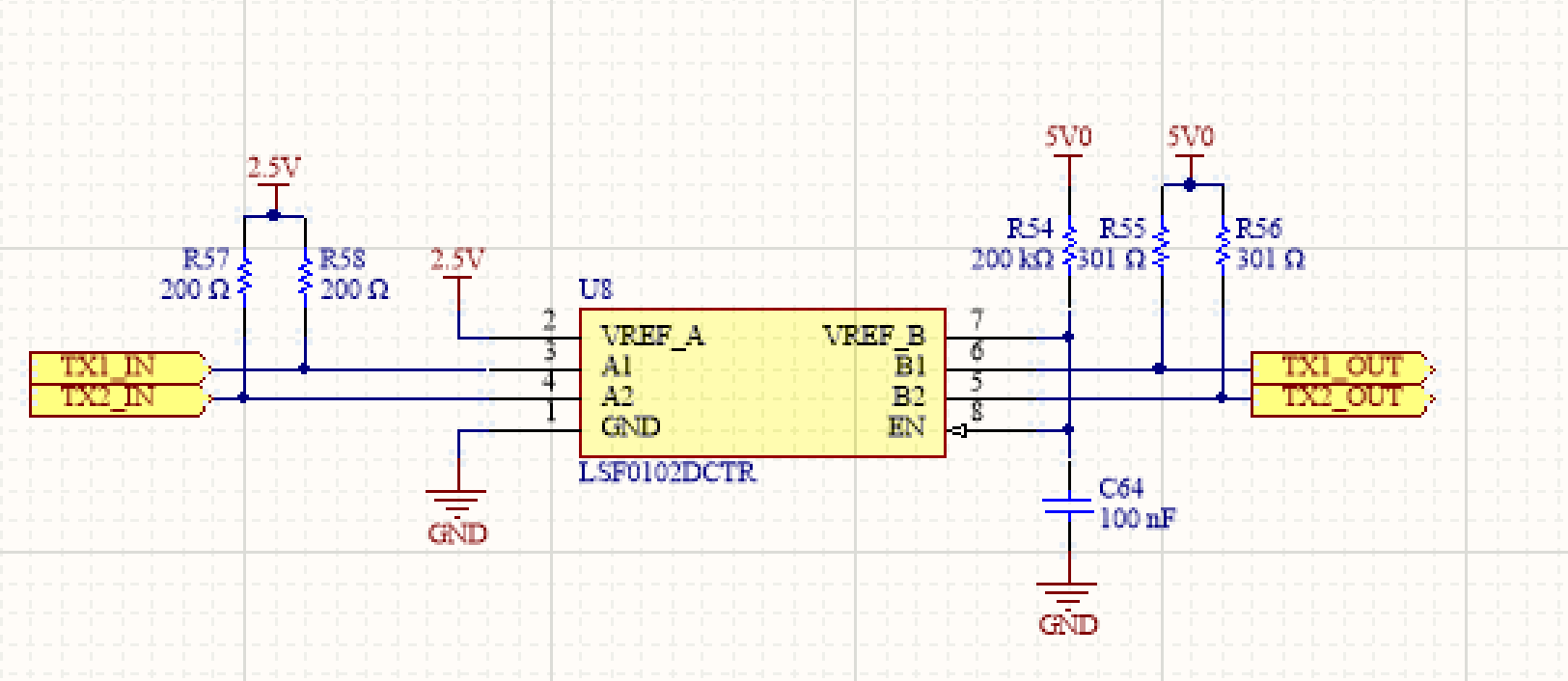Other Parts Discussed in Thread: SN74LVC2T45
what is the propagation delay of the chip? Below is my schematic. 
This thread has been locked.
If you have a related question, please click the "Ask a related question" button in the top right corner. The newly created question will be automatically linked to this question.
what is the propagation delay of the chip? Below is my schematic. 
Hello,
The LSF0102 is a passive translator, meaning that it has no internal current drive capabilities. The above circuit doesn't have enough information to tell me what the delay for your signal will be from the input to the output since I cannot see the parasitic capacitance on the "B" side of the translator, nor can I see the strength of the drivers on the "A" side of the translator.
I would highly recommend watching this video series that explains these parts in detail: Understanding the LSF Family of Bidirectional, Multi-Voltage Level Translators
Since the each channel of the LSF0102 only contains a single n-channel MOSFET in a 'pass transistor' configuration, the time for the signal to pass from A1 to B1 is miniscule, typically measuring under 1ns. That does not explain the full rise time of the output side, however, since that will be controlled by the RC time constant of that connection. The videos above explain this in detail.
To give you a 'ballpark' answer, assuming a very short connection on B1 (15pF), I would expect to see the input to output low to high delay time to be around 15ns. If a larger load is assumed (50pF), then the time will be closer to 50ns.
For faster signals, I would recommend switching to an active translator like the SN74LVC2T45